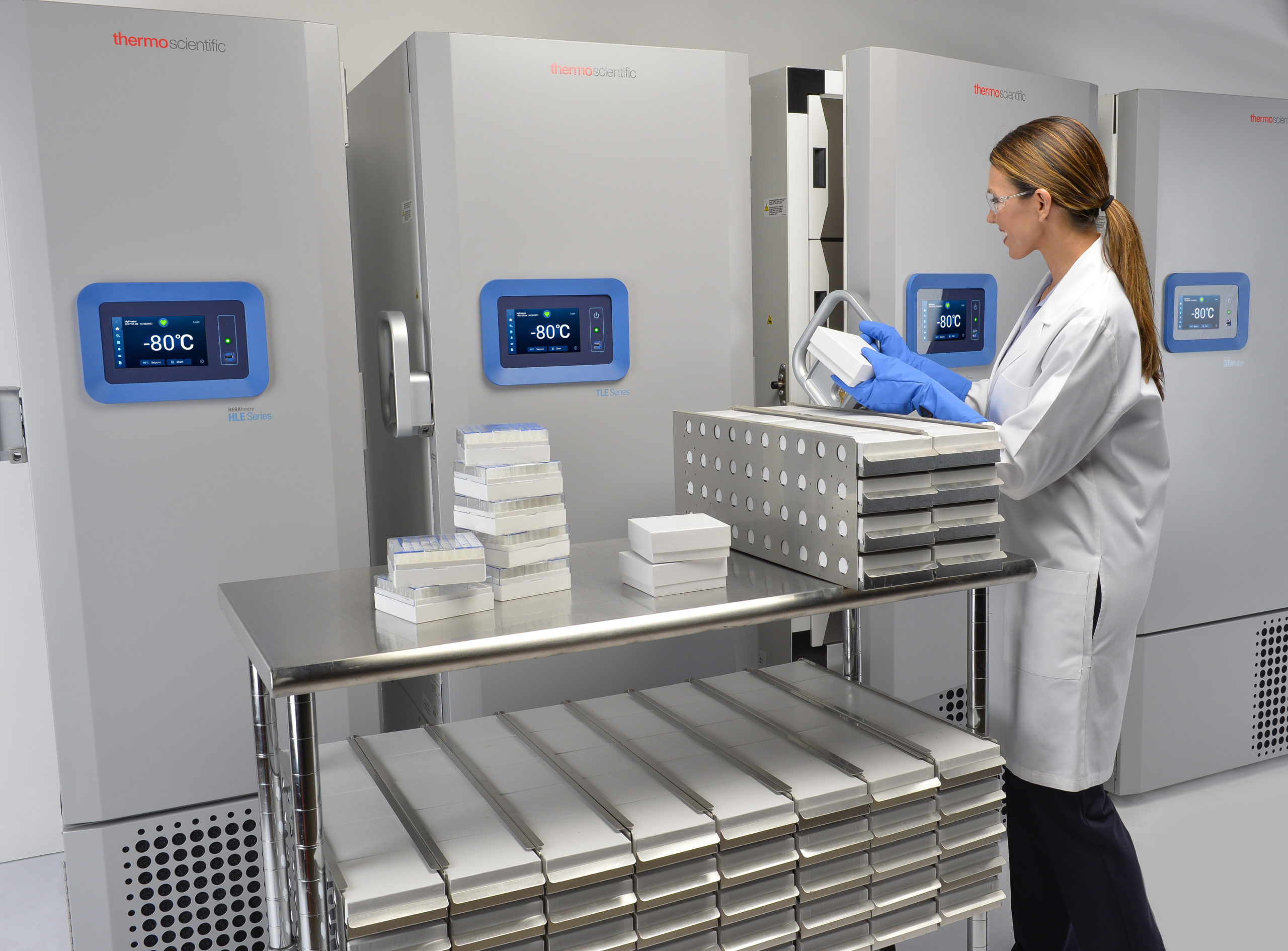One of the most critical components of clinical, life science, and pharmaceutical laboratories, an ultralow temperature freezer should be as reliable as possible. It helps with long-term sample preservation at precise temperatures which is why you should make the right decision when purchasing the unit.
Chances are that the ULT technology has undergone changes since you last purchased the freezer, and this is a niche that continues to grow in complexity each year, here is an in-depth explanation on how these freezers work.
Let us take a look at some of the most important considerations you should make when looking for a new ultralow temperature freezer.

Table of Contents
1) Type of Freezer
There are several design options available for ultralow temperature freezers in the market. Each of these types have their own benefits and drawbacks for specific applications and laboratories.
It’s also common to mistake a low-temperature freezer with a refrigerator, check out this article to
better understand the difference.
For example, chest types offer better energy efficiency than upright styles, but the latter is still the preferred choice among laboratories with space restrictions.
2) Reliability of The Unit
When looking for options, it is important to find a brand you can trust. The best way to find out which company and product are reliable is to look at the track record of the manufacturer.
Do a little research to find out the rate of reliability for the freezer, the company’s experience in the field, and any occurrences of failures of technology.
See that you find a freezer with proven reliability and an established reputation in the field so that you don’t have to suffer from the consequences of faulty technology.
3) Type of Refrigerant
The type of refrigerant used in the freezer is an important factor guiding the purchase. Ultralow temperature freezers using hydrocarbon refrigerants provide better efficiency than those with traditional refrigerants.
This makes the hydrocarbon type more popular, but they are restricted in some countries for their flammability.
4) Temperature Uniformity
You must have noticed that the food at the bottom of the fridge in the house gets colder than that stored at the top. This can happen with your ultralow temperature freezer as well. It can be an issue if you want all your samples to be stored at the same temperature.
Seeing variances in the temperature between the top and the bottom areas is common in upright freezers. Consider checking the uniformity data provided by the manufacturer and look for test probe locations. Note that uniformity is better when the freezer is loaded completely.
5) Capacity & Footprint
The higher the capacity of the freezer, the lower is the energy consumption per cubic foot. So you can consider sharing the unit with another laboratory if you don’t need a big one.
Another consideration is the internal storage of the freezer. If your work demands storing heavy racks in the top compartments, you should consider a model with side-access drawers rather than pull-out.
6) Energy Efficiency
Ultralow temperature freezers are powerful components that consume a lot of power to do their job. While most new models are designed to be energy-efficient, it is important to pay attention to the requirements and preferences of your laboratory.
Most labs are looking to go green and save on costs these days. Try to achieve a balance between energy efficiency and heat removal capacity for long-term sample protection. Check the number of kilowatt-hours used per day as mentioned in the manufacturer data.
7) Placement

Consider where in the laboratory your freezer will be positioned. This is not only important for space but also for sound.
ULT freezers generally produce some noise, and it can become troublesome when placed near your seating as most components are placed on the top of the unit. Consider asking about the noise rating of the freezer or testing yourself to see if it can work in the office or lab.
Also, see that the location you choose for the freezer gives enough side and top clearance for air
circulation.
8) Features For Frost Avoidance
Frost buildup is one of the biggest nuisances when using ultralow temperature freezers. It affects the
unit’s performance to a great extent.
However, the newest models come with advanced features to minimize frost buildup. Look for features like claw latches, insulation of doors, and vacuum relief ports to prevent ice buildup during the opening and closing of doors.
9) Pull Down & Warm-Up Time
The warm-up and pull-down times of a ULT freezer depend on the efficiency of the compressor system, the type of insulation, and the metal shelves installed in the unit.
These times can differ between models and manufacturers and is an important consideration for efficiency.
A reputed manufacturer is likely to provide data about pull-down and warm-up time and the power consumption of the freezer.
You can also look for additional features like door gaskets, insulation, and claw doors to use lesser power and increase the warm-up time.
10) Usage of The Unit
When protecting the samples, temperature recovery is one of the most critical factors, particularly when your work demands opening the door of the ULT freezer quite often.
Display readings can sometimes mislead as they show a temperature after closing the door whereas the actual temperature is different. A long recovery period can be dangerous for your samples as it takes longer to achieve the desired temperature.
It is important that you check the temperature mapping of the freezer you are buying so that you always have accurate information about the temperature performance during the recovery period.
Conclusion
Risking your samples to a random ultralow temperature freezer can be an expensive mistake. Make sure you use the above-discussed ten points for your research before buying your ULT freezer to get the most reliable and suitable product for your sample protection.





